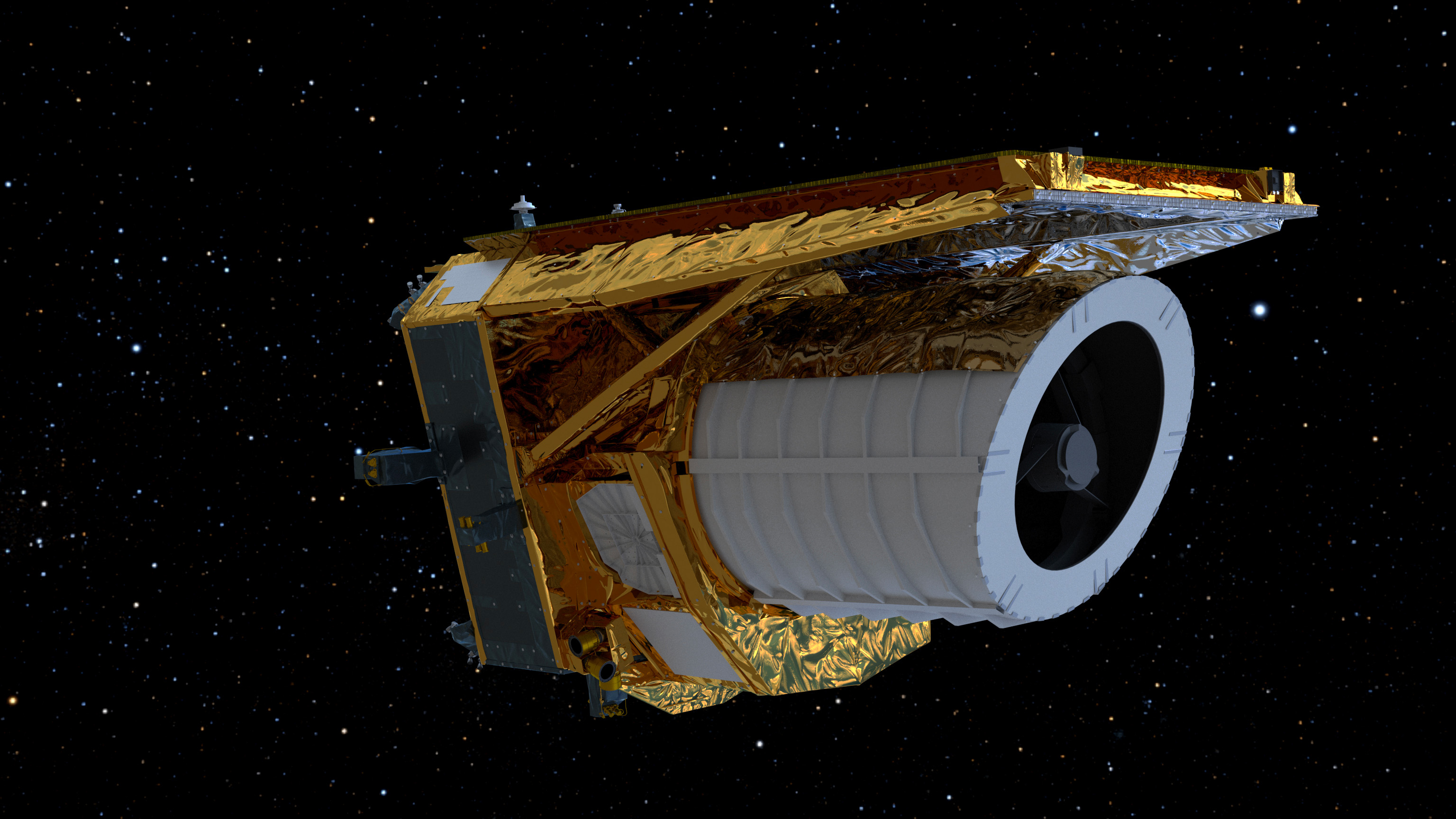 Euclid space mission lifted off from Cape Canaveral, USA, on July 1st. It is a scientific project of the European Space Agency (ESA), in which Italy participates through the Italian Space Agency (ASI), the National Institute for Astrophysics (INAF) and INFN. Euclid is equipped with a 1.2 m reflecting telescope and two scientific instruments: the VISible instrument, (VIS) and the Near-Infrared Spectrometer and Photometer, (NISP). They are designed to provide very sharp images of the extragalactic sky and perform near-infrared spectroscopy of millions of galaxies. Euclid's overarching scientific goal is to reach a detailed understanding of dark matter and dark energy, by observing and studying two different and independent cosmological phenomena: weak gravitational lensing, that is the apparent distortion of the images of distant galaxies induced by the light passing through non-uniform distribution of dark matter along the line of sight, and acoustic oscillations in the visible baryonic matter of the universe and the clustering pattern of galaxies. The Italian Space Agency in cooperation with INAF and INFN has led the industrial team that designed and built the Italian contributions to the mission. The team consisted of a temporary association of companies set up with OHB as agent and SAB Aerospace and Temis as principals. ESA selected Thales Alenia Space Italia of the Leonardo group as prime contractor for the construction of the satellite and its Service Module. Over 200 Italian scientists from INAF, INFN and several universities, such as University of Bologna, University of Ferrara, University of Genoa, Università Statale di Milano, University of Rome "Roma Tre", University of Trieste, SISSA, CISAS, have come together to take part in the Euclid mission. The launch will be followed by an intense three-month period of testing and calibration of the spacecraft and its scientific instruments in preparation for the observations. Euclid will observe a third of the sky with unprecedented accuracy and sensitivity over a period of six years. By the end of its nominal mission lifetime, which currently is estimated to be around six years, Euclid will have taken images and photometric data of more than a billion galaxies and millions of galaxy spectra. They will be fundamental also to promote the advancement of many other astrophysical sectors.
Euclid space mission lifted off from Cape Canaveral, USA, on July 1st. It is a scientific project of the European Space Agency (ESA), in which Italy participates through the Italian Space Agency (ASI), the National Institute for Astrophysics (INAF) and INFN. Euclid is equipped with a 1.2 m reflecting telescope and two scientific instruments: the VISible instrument, (VIS) and the Near-Infrared Spectrometer and Photometer, (NISP). They are designed to provide very sharp images of the extragalactic sky and perform near-infrared spectroscopy of millions of galaxies. Euclid's overarching scientific goal is to reach a detailed understanding of dark matter and dark energy, by observing and studying two different and independent cosmological phenomena: weak gravitational lensing, that is the apparent distortion of the images of distant galaxies induced by the light passing through non-uniform distribution of dark matter along the line of sight, and acoustic oscillations in the visible baryonic matter of the universe and the clustering pattern of galaxies. The Italian Space Agency in cooperation with INAF and INFN has led the industrial team that designed and built the Italian contributions to the mission. The team consisted of a temporary association of companies set up with OHB as agent and SAB Aerospace and Temis as principals. ESA selected Thales Alenia Space Italia of the Leonardo group as prime contractor for the construction of the satellite and its Service Module. Over 200 Italian scientists from INAF, INFN and several universities, such as University of Bologna, University of Ferrara, University of Genoa, Università Statale di Milano, University of Rome "Roma Tre", University of Trieste, SISSA, CISAS, have come together to take part in the Euclid mission. The launch will be followed by an intense three-month period of testing and calibration of the spacecraft and its scientific instruments in preparation for the observations. Euclid will observe a third of the sky with unprecedented accuracy and sensitivity over a period of six years. By the end of its nominal mission lifetime, which currently is estimated to be around six years, Euclid will have taken images and photometric data of more than a billion galaxies and millions of galaxy spectra. They will be fundamental also to promote the advancement of many other astrophysical sectors.
- NEWS INFN






